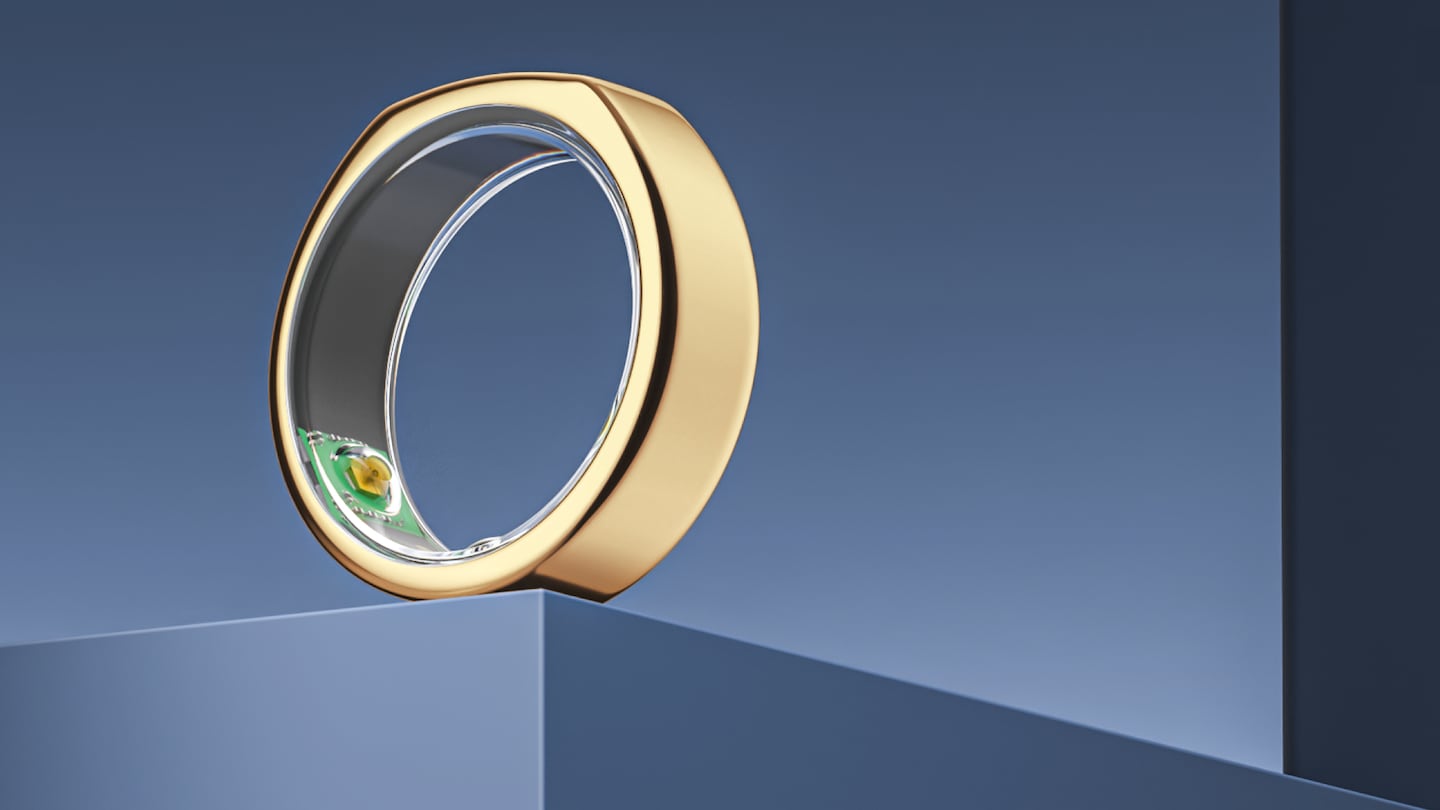
The Business of Fashion
Agenda-setting intelligence, analysis and advice for the global fashion community.

Agenda-setting intelligence, analysis and advice for the global fashion community.

 Opens in new window
Opens in new windowLast week, Oura, the smart ring that tracks everything from general fitness to sleep patterns, launched a $399 band in yellow gold. The limited-edition production marks the middle ground between the company’s no-nonsense $299 silver ring and a $999 style studded with a line of tiny diamonds.
Oura, a breakout hit in wearable tech, is trying, where others have failed, to make its products fashionable. Watches, fitness bands and wireless headphones have found their audiences in a category dominated by Apple, which captured nearly 30 percent of the wearables market in the first quarter of 2020, according to research firm IDC. But smart rings and other more decorative jewellery are a tougher proposition. Ringly, launched in 2015 and designed with women in mind, attracted attention, but its technology was not advanced, or useful, enough to become more than a novelty. It shut down in 2018.
What has instead worked in the space are utilitarian devices that have an anti-style style. The Apple Watch, first marketed as a fashion-y item that the customer can personalise, has since been repositioned as a fun-but-mostly-functional gadget. The Hermès edition, a long-term collaboration between the two brands, remains popular. But the industrial design of the watch stands on its own: no bells and whistles needed — or wanted.
Unlike past rings, Oura, launched in 2018, has managed to find a market of more than 300,000 wearers to date because of its impressive tech. In an age of “biohacking,” when wealthy and conscientious consumers will do anything — from track their daily steps to pop Metformin pills to live a healthier, longer life — Oura’s sleep-tracking sensors and ability to monitor your heart rate and temperature make it an ideal tool.
ADVERTISEMENT
We really want this to feel as much about fashion as it is technology.
The sleep data is particularly useful because, unlike an Apple Watch, the ring does not have to be charged daily, meaning you can wear it around the clock. It’s become popular with start-up bros and Silicon Valley investors buying big into the self-optimisation concept. (Jack Dorsey is a user and Square, the payments company he runs, is a lead investor.) They value practising good sleep hygiene as much as they do exercising and eating well.
But this audience is predominantly made up of men, who may not wear jewellery on their hands other than a wedding ring.
By launching a gold option — which is limited-edition, for now — Oura is making the point that its ring is not only a utility, but an aesthetic statement. One that chief executive Harpreet Rai hopes will be appealing to a female audience. While the majority of Oura wearers are currently men, Rai believes that the company can eventually flip-flop that ratio, especially given that women are far more likely to wear rings.
What’s more, Oura can see in its data that female wearers are more engaged — using the ring not only to track sleep patterns and overall fitness, but also to track temperature and for meditation — which means they are likely finding the experience to be more rewarding.
“We’ve heard from customers, especially from our female customers, that more colours would be really helpful,” said Rai, noting that an earlier experiment with rose gold — which was well-received but the colour faded out too quickly — inspired the company to get a yellow colour off the ground as quickly as possible. “We really want this to feel as much about fashion as it is technology.”
I should be a good judge of whether Oura is on the right rack. I’ve worn an Apple Watch since the beginning. First out of curiosity — and then out of an obsession with checking my movement, my texts and even the weather without having to constantly grab for my phone.
I’m also familiar with the product. My husband has been wearing an Oura ring for most of the pandemic; we’re constantly discussing his sleep patterns and whether the data reflects reality of everyday life. Anecdotally, it seems pretty on point. One of his worst sleeps of the year was on the night of the election, and he wasn’t alone. Oura analysed data from its users to determine that, as a nation, the US “lost” nearly 139 million hours of sleep that evening and that heart rates averaged 1.4 beats per minute. Higher than the typical Tuesday.
We have an aspiration that the ring would look so good from a fashion perspective that it feels like jewellery with a hint of technology,
But I’ve not been compelled to try Oura’s ring myself. Over time, I’ve become so reliant on the Apple Watch that its appearance has become a secondary concern. I wear a black rubber band, made by Apple, that’s suitable for running, and have even forgotten to take it off before black-tie events. Do I wish it looked more like a Cartier Tank or an Hermès Cape Cod? Sometimes, but not enough to replace it with one of those, or to even swipe out the rubber band for one of Apple’s beautiful Hermès Double Tour leather wraps. Everything else about my style — the colours, silhouettes and designers I favour — is so specific that I never worry about the Apple Watch deterring from it.
ADVERTISEMENT
A ring, however, is different. I typically only wear my wedding and engagement ring, and the occasional fashion ring. While Oura’s design, with its flat top and smooth edges, is sleek — and getting sleeker with each iteration — rings in particular are very personal. I’m not sure I’d be willing to make a 24-hour-a-day, seven-day-a-week commitment to it.
That said, I’m testing out a gold review unit right now, and the data has already convinced me to change something about my sleep routine. While I’ve scored well on numbers of hours slept and the kind of sleep I’m getting — enough deep sleep, enough REM sleep — I’m very restless. Oura’s app suggested making the temperature in my bedroom far lower than what it normally is at night, so I’m going to try it. As for the ring itself, I like the gold colour. But I haven’t gotten to the point where I don’t even notice it’s there, and I do wish I had more control over the actual design.
Is there a solution for consumers like me? Rai said that about 10 percent of his customers only wear their rings at night, but he doesn’t recommend it. What he does believe is that the company — which has raised more than $48 million to date, including $28 million this year in a round led by Forerunner Ventures, Google’s Gradient Ventures and Square — can do for people like me is offer more and more colours and styles. He’s constantly talking with designers about new ways to package the technology, maybe even through brand collaborations.
“We have an aspiration that the ring would look so good from a fashion perspective that it feels like jewellery with a hint of technology,” he said.
Sign up for VOICES 2020 to hear Oura’s chief executive Harpreet Rai speak alongside renowned sleep expert Matthew Walker on The Science of Sleep.
Related Articles:
Will Consumers Want Levi’s New ‘Wearable Tech’ Jacket?
Jony Ive’s Advice to Designers and Executives
BoF’s ANNUAL GATHERING FOR BIG THINKERS
VOICES brings together the movers, shakers and trailblazers of the global fashion industry and unites them with the big thinkers, entrepreneurs and inspiring people who are shaping the wider world, hosted by BoF founder and editor-in-chief, Imran Amed, and led by BoF's expert editors and correspondents.
Register now to reserve your spot.
1. THE WIDER WORLD: Making sense of 2020 and charting a way forward
2. INSIDE THE FASHION SYSTEM: Addressing the industry’s most important challenges and opportunities
3. TECHNOLOGY & INNOVATION: Exploring how new technologies will change consumer behaviour
4. REINVENTING RETAIL: Understanding how forces accelerated by the pandemic are completely reshaping the retail landscape
5. LIVE YOUR BEST LIFE: Finding the balance, insight and inspiration to be the most authentic, healthy version of yourself
JOIN US FOR A GLOBAL CONVERSATION ABOUT THE FUTURE OF THE FASHION INDUSTRY
This year, VOICES will be delivered via a live broadcast adapted to the unique circumstances of the Covid-19 era — and BoF Professional and BoF Professional Student members anywhere in the world can take part in this live global conversation as the industry looks ahead to 2021. If you are not a member, sign up today with our 30 day trial, including access to VOICES 2020.
TikTok’s first time sponsoring the glitzy event comes just as the US effectively deemed the company a national security threat under its current ownership, raising complications for Condé Nast and the gala’s other organisers.
BoF Careers provides essential sector insights for fashion's technology and e-commerce professionals this month, to help you decode fashion’s commercial and creative landscape.
The algorithms TikTok relies on for its operations are deemed core to ByteDance overall operations, which would make a sale of the app with algorithms highly unlikely.
The app, owned by TikTok parent company ByteDance, has been promising to help emerging US labels get started selling in China at the same time that TikTok stares down a ban by the US for its ties to China.